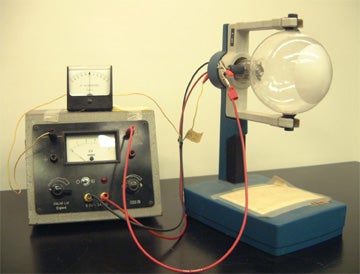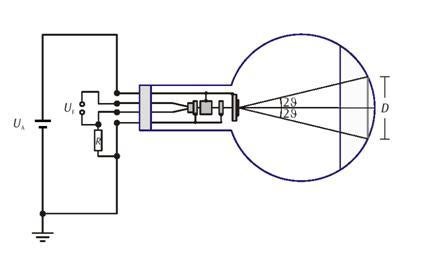MP.4 – Electron Diffraction
This demonstrates the wave nature of particles. It shows the diffraction of an electron beam by the lattice structure of a graphite sample. An electron gun, using an indirectly heated oxide coated cathode, projects a beam of electrons through a thin layer of pyrolythic graphite, which is suspended within an evacuated cathode ray tube. Electrons are diffracted by the crystal planes of the graphite sample to form rings. The rings become visible to the eye when the electrons strike a luminescent screen at the end of the tube. Undiffracted electrons appear as a bright spot in the center of the diffraction rings. It illustrates de Broglie’s hypothesis, Planck’s constant, electron diffraction and the dual wave/particle nature of the electron. The tube is 13 cm in diameter and is mounted on a support about 30 cm tall. At lower voltages (1-2 kV), only the bright spot is seen on the screen. As one increases the voltage (5 kV), the whole pattern becomes clear. The diffraction pattern is clearly visible, especially with the lights turned off.


